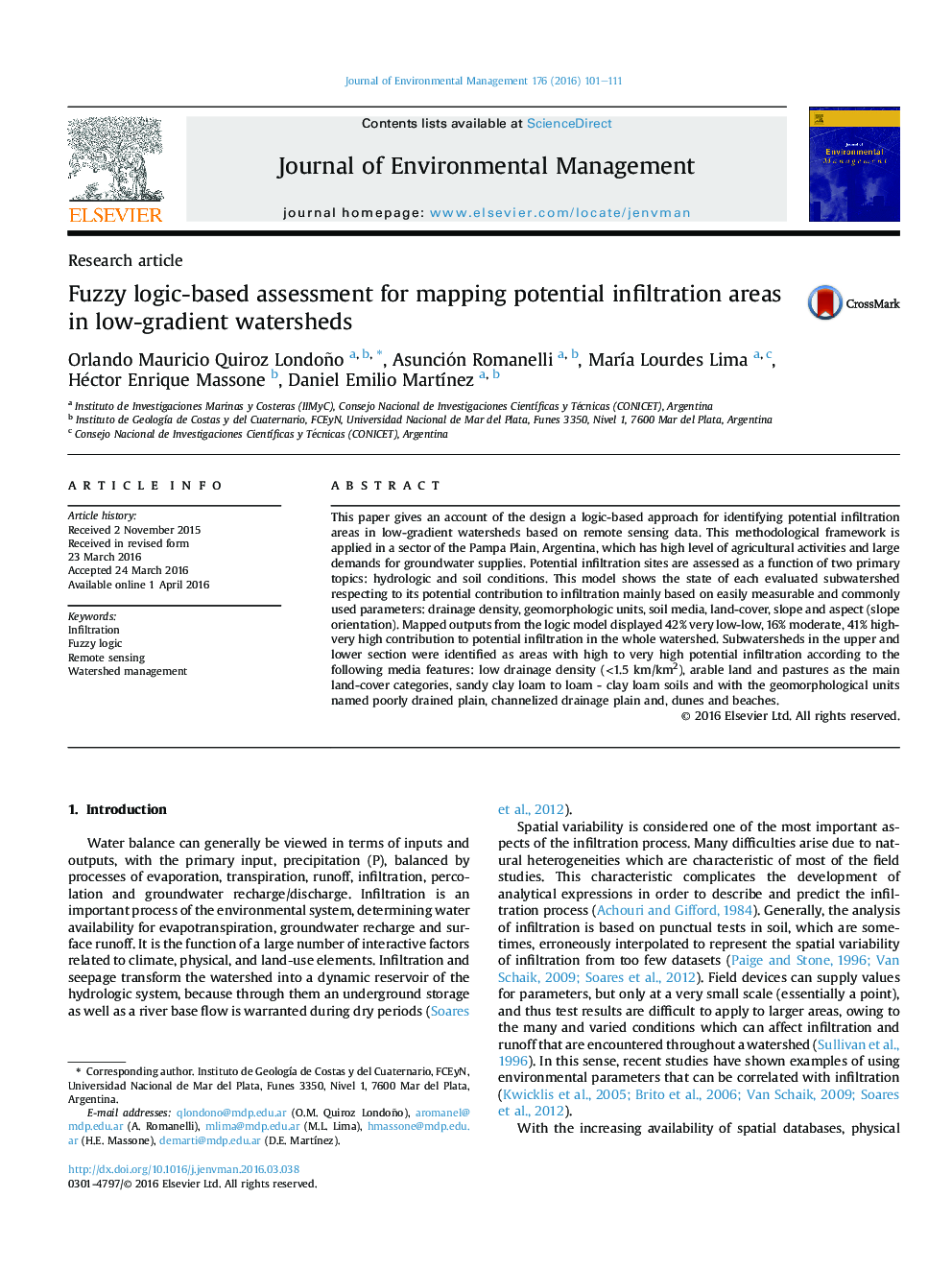| Article ID | Journal | Published Year | Pages | File Type |
|---|---|---|---|---|
| 1055332 | Journal of Environmental Management | 2016 | 11 Pages |
•A Fuzzy logic-based model for assessing the potential infiltration areas is demonstrated.•This model is based on hydrologic and soil conditions.•Easily measurable and commonly used parameters are included.•A case study in the Pampa Region, Argentina demonstrated the efficiency of the tool.•This tool allows siting future protection areas and optimizing water management.
This paper gives an account of the design a logic-based approach for identifying potential infiltration areas in low-gradient watersheds based on remote sensing data. This methodological framework is applied in a sector of the Pampa Plain, Argentina, which has high level of agricultural activities and large demands for groundwater supplies. Potential infiltration sites are assessed as a function of two primary topics: hydrologic and soil conditions. This model shows the state of each evaluated subwatershed respecting to its potential contribution to infiltration mainly based on easily measurable and commonly used parameters: drainage density, geomorphologic units, soil media, land-cover, slope and aspect (slope orientation). Mapped outputs from the logic model displayed 42% very low-low, 16% moderate, 41% high-very high contribution to potential infiltration in the whole watershed. Subwatersheds in the upper and lower section were identified as areas with high to very high potential infiltration according to the following media features: low drainage density (<1.5 km/km2), arable land and pastures as the main land-cover categories, sandy clay loam to loam - clay loam soils and with the geomorphological units named poorly drained plain, channelized drainage plain and, dunes and beaches.
